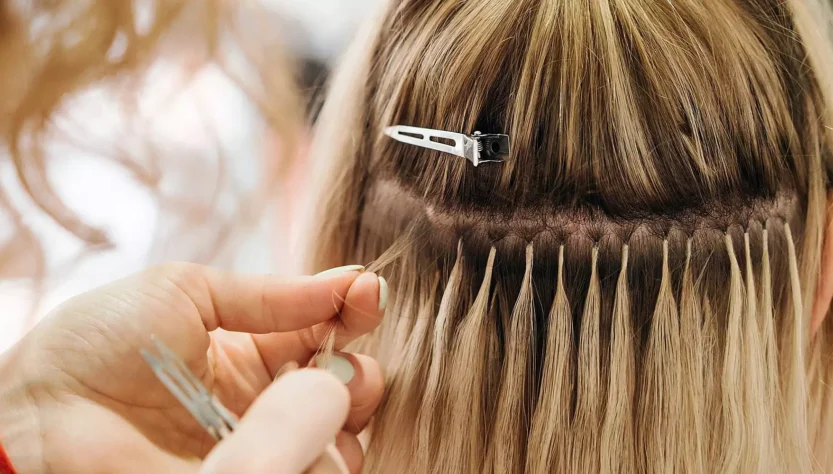Yaki Straight Clip In Hair Extensions – colored hair extensions may cause irreversible damage your hair. Take 5 minutes to go through this article before making a purchase.
Some common hair extension horrors:
1. Traction Alopecia: This is the most common problem caused by weave in extensions. If the weave is too tight, it would tug at the natural hair causing hair loss and bald patches
2. Contact Dermatitis: This is an allergic reaction caused by glue used for bonding extensions to real hair. Symptoms include itchiness, red rash.
3. Headache: If extensions are attached too close to the scalp then it could cause recurring headache due to natural hair being pulled too tight.
4. Inflammation and irritation of scalp: Once the extensions become tangled or matted, they get caught in tines while brushing or combing hair resulting in inflammation and irritation.
Always remember hair extensions industry is unregulated and lacks the standards that apply to hair cutting and coloring industry. Hence, it is in your own interest to do as much research as possible
Introduction
Colored Hair Extensions are an extremely popular hair/ fashion accessory these days. At some point or the other, you would have also considered using artificial extensions to add bright colors or highlights to your hair. Though no doubt extensions are an easy and instant way to add volume or color to your hair, it can damage your hair and scalp if extreme caution is not exercised.
It is very important to be fully aware about benefits and hazards of any product before you start using it. It is all the more important when the product relates to your hair, as hair damage is very difficult and time consuming to repair.
History of hair extensions
Hair extensions were first used during the Egyptian period by both genders as an ornament. Egyptian men used to shave their scalp but wear wigs as a safeguard from the different elements, infections, and lice.
Extensions for women became popular in the early 19th century, when Edwardian women started wearing false hair add-ons to create the pompous hairstyles. By the Victorian era, hair extensions were being used extensively. For most of the 20th and 21st century only rich could afford them.
Many years later, Asian countries like India and China started commercially processing and manufacturing hair extensions. This made hair extensions affordable and opened the way for selling colored hair extensions and wigs all over the world. The integration techniques have also evolved over this period, where earlier plant raisin was used to stick wigs to the head now there are techniques like fusion, clip-in, clip-on, bond weaving etc.]

